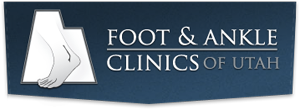
Pediatric Foot Care
As early as birth, foot complications can present themselves in children. Some complications, such as flatfoot and ingrown toenails, can be inherited or caused in the womb. Others can occur as children begin their walk through life, from the occasional fall to an injury suffered playing a sport. No matter the cause or severity of the problem, the health of a child's feet should not be taken for granted. However, according to an American Podiatric Medical Association (APMA) survey of parents with children under the age of 18, 35 percent said that they would not be motivated to take their child to a doctor's office for foot or leg pain treatment. Furthermore, only 25 percent of those surveyed would take their child to see a podiatrist—a foot and ankle specialist. Member podiatrists from the APMA can help make sure your child stays on his/her feet by offering expert medical diagnosis and treatment options for all issues associated with the feet. If there is a family history of foot problems, a toddler should be seen by a podiatrist who can make sure his/her feet are progressing normally, as soon as the child begins walking. The following chart details common inherited and developmental foot complications in children, possible signs and symptoms and treatment options.
Clubfoot
Hooked foot that twists inward and downward.
Recommended Treatment:
- Casting.
- Surgery in more severe cases.
Metatarsus Adductus (MTA)
Front of foot bent inward at the instep resembling the letter "C". Excessive tripping when walking
Recommended Treatment:
- Stretching exercises.
- "Straight last" shoes.
- Serial casting.
- Surgery in more severe cases.
Polydactyly (Multiple Toes)
Eleventh or twelfth toe.
Recommended Treatment:
- Remove extra toes if they interfere with walking or wearing shoes.
Syndactyly (Webbed Toes)
Skin fails to separate between the toes.
Recommended Treatment:
- Surgical separation of webbed toes.
Flatfoot
Pain. Slow walking. Difficulty keeping up with other children.
Recommended Treatment:
- Custom foot orthotics.
- Change in the type of shoe worn.
- Surgery in some cases.
In-toeing
One or both feet point inward. Tripping. Sitting on knees in "W" position.
Recommended Treatment:
- Exercises (first position ballet, sitting Indian style, riding "big wheel") .
- Casting or Bracing.
Achilles Tendonitis
Pain with activity at the back of the leg and heel. Swelling.
Recommended Treatment:
- Rest.
- Icing.
- Stretching.
- Physical Therapy.
- Heel Lifts.
- Custom Foot Orthotics.
- Soft Casting.
Stress Fracture
Pain. Swelling
Recommended Treatment:
- Immobilization.
- Surgery in more severe cases.
Sever's disease
Pain with side-to-side pressure of the heel. Pain with activity. Pain with soccer or baseball cleats. Heel pain.
Recommended Treatment:
Toe-Walkers
Walking on Toes.
Recommended Treatment:
- Stretching Exercises.
- Neurological Exam.
- Surgery in more severe cases.
Plantar Fasciitis
Pain when standing or walking. Heel pain.
Recommended Treatment:
- Stretching.
- Arch Supports.
- Custom Foot Orthotics.
Ankle/Foot fracture
Pain in the area of fracture. Protruding bone.
Recommended Treatment:
Ankle Sprain
Pain. Swelling. Bruising.
Recommended Treatment:
- Immobilization.
- Casting.
- Bracing.
Plantar Warts
Painful thickening of the skin. Hard and flat, elevated surface most often on the sole of the foot.
Recommended Treatment:
- Mild Acids.
- Lasers.
- Freezing Temperatures.
- Surgical Removal.
- Medication.


